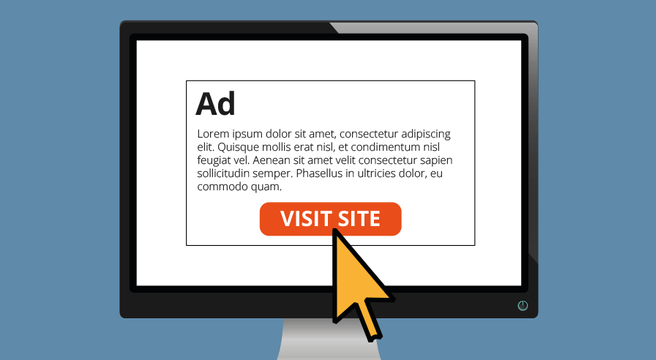Tempting a user to click on your PPC search advert is a challenge itself, but what about once the visitor has clicked through and landed on your website? How do you convert that visitor into a customer? Here I take you through the fundamentals to a fully optimised landing page to increase your chances of conversion.
Correlate Your Keywords, Advert And Landing Page
First things first, you need to make sure that your keywords, advert and landing page tie in with one another and is relevant to the user. For example, if a user searches for ‘Hedge Trimming Services’, do not take them to a landing page which shows all your gardening services, take them to a URL which displays and describes your Hedge Trimming Service.
When writing copy for your landing page, it would be wise to refer back to your PPC keywords and adverts. However, do not write word-for-word your advert text, instead, create new and unique content including some of the keywords you’re using from your PPC Campaign. This will help towards keeping a clear and consistent message throughout the users’ journey and Google will recognise this as relevant content to the end user.
Have A User-Friendly And Navigable Website
It is absolutely key that you have a mobile-friendly website which is navigable for the user. Finding the right balance between an attractive website design and having a simple user-friendly navigation can be difficult. Sometimes companies can go overboard around the number of images, pop-ups and videos on a website which can slow a website down.
Google wants their users to find information on websites easily across all devices. We’re transforming into a digital world where more and more people are using their smartphones every day to find information, enquire about services and make purchases. Google has reacted to this with a ‘Mobile First’ approach and you can adapt to this by optimising your mobile site to include attributes such as ‘Click to call’ phone numbers and mobile-friendly forms.
Increase Website Speed And Decrease Loading Times
Page speed and decreasing loading times on your PPC landing page can help contribute massively to your results. The difference between 1 and 2 seconds loading time could be the difference between the user bouncing off your page or reading further. Google actually recommend having a website which renders within one second.
This is all part of the customer experience, users won’t hang around waiting for a page to load. Due to technological advances, visitors these days tend to use Google and expect to retrieve the information they want in the quickest turnaround possible. You can test your mobile speed and other features with Yell’s free website checker tool.
Highlight Your USPs
Once your website is navigable, fast and provides a good experience for all users, the baton is handed back to you where you need to sell your company to the visitor. Why should customers choose you over other competitors? What makes you stand out?
It could be that you’re a local, family business with over 30 years’ experience, you may be a retailer who offers free next day delivery, you may pride yourself on your competitive pricing and high-quality service. Whatever the reason, you need to showcase this and don’t be afraid to brag!
Review Your Call-To-Actions
Take a look at your Call-To-Actions (CTAs) and where they currently sit and decide if that is the optimal position for them. There is a lot of psychology behind CTAs, from the positioning and colours to the message you display. Conducting A/B landing page tests wouldn’t be the worst idea to find out what converts well.
You also need to make sure that your CTAs reflects your business tone and that you’re targeting the correct type of CTAs for your business. What is the aim of your website? Do you want phone calls? Do you want visitors to download your brochure? Sign-ups to your subscription service? Depending on the outcome you want, make sure you have the necessary measures in place to achieve that. This can be in the form of click to call numbers, mobile forms (which doesn’t require much typing), PDF downloads, subscription buttons and much more!
Draw your users’ attention to your CTAs but make sure you have enough information in your copy to make the visitor want to take action and convert.
Display Trust
We’ve all been on websites where we’re not sure whether to trust the company or not. So what do we do? We Google the company name followed by ‘reviews’. You don’t want to fall into this category. You can combat this without a user leaving your site by displaying customer testimonials and reviews, payment assurances, any professional accreditations, social media links and full contact information. This will aid towards promoting trust on your website.
However, don’t overload the user with information. Think about your customer base and audience and what trust factors would be aligned with them. For example, if you owned a dog walking business, potential customers are likely to want to read lots of positive testimonials and see images of your staff with your customers’ dogs.
What Happens After Landing Page Improvements?
So, what happens after you make improvements to your website and landing page? Will you see enhanced results in your PPC campaigns? Well ‘touch wood’, you should start seeing better results as long as your proposition is strong enough.
Landing page improvements should help increase conversion rates and enhance user experience which will help with improving brand perception. Also, your PPC will gain higher quality scores which in turn reduces your cost-per-click over time.
If you don’t see an uplift in performance, go into Google Analytics and see which pages have the highest bounce rates for you to take action or use heat maps to see where visitors lose interest. Remember to keep on testing until you’re driving the conversions that you want.






